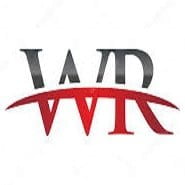-

-
Wikirise.com Advertise with Us HereStats: 4,783 members, 41,615 Posts
Number of Comments : 2,630
Date: Sunday, 24th November 2024
North Korea fires missile over Japan prompting citizens to take shelter
By Essang Michael - October 5, 2022 | Categories: World Tags: Foreign
Share this post:

North Korea fired an intermediate-range ballistic missile over Japan on Tuesday morning, October 4, prompting Tokyo to activate the country’s missile alert system and order people to take shelter.
The last time North Korea fired a missile over Japan was in 2017, at the height of a period of “fire and fury” when Pyongyang’s leader Kim Jong Un traded insults with then-US president Donald Trump.
South Korea’s military said on Tuesday it had detected the launch of an IRBM, which flew around 4,500 km (2800 miles) at an altitude of about 970 km and speeds of around Mach 17.
“Specific details are under close analysis by South Korean and US intelligence,” the South’s Joint Chiefs of Staff added in a statement.
South Korea’s President Yoon Suk-yeol called the launch a “provocation” that violated United Nations regulations.
Yoon “ordered a stern response and to take corresponding measures in cooperation with the United States and the international community”, his office said in a statement.
Tokyo also confirmed it had launched an IRBM, activated the country’s missile alert warning system and urged people to take shelter.
“North Korea appears to have launched a missile. Please evacuate into buildings or underground,” the government said in an alert issued at 7:29 am (2229 GMT Monday).
National broadcaster NHK said the alert was in effect for two northern regions of the country.
“A ballistic missile is believed to have passed over our country and fallen in the Pacific Ocean. This is an act of violence following recent repeated launches of ballistic missiles. We strongly condemn this,” Prime Minister Fumio Kishida told reporters.
Defence Minister Yasukazu Hamada said that North Korea “has in the past launched Hwasong 12-type missiles four times, so this could be the same type”.
The flight distance, which Tokyo estimated at 4,600 km, was thought to be a new record for that particular missile.
With talks between the US and North Korea stalled, nuclear-armed North Korea has doubled down on Kim’s military modernisation plans this year, testing a string of banned weaponry, including an intercontinental ballistic missile (ICBM) for the first time since 2017.